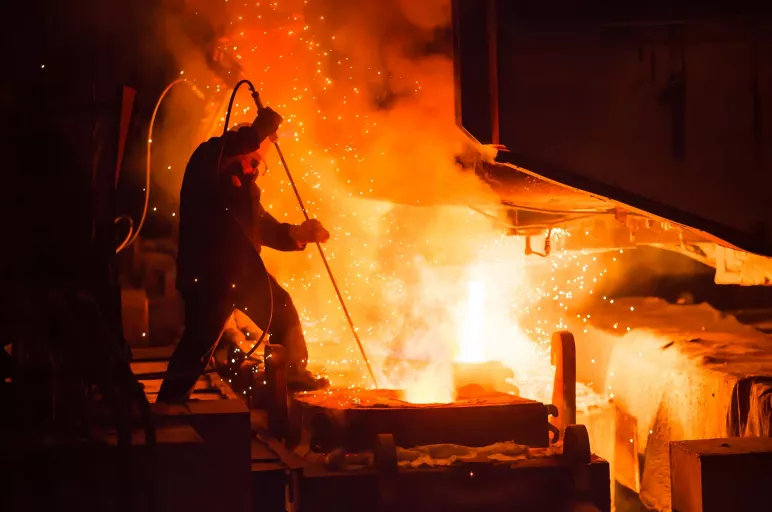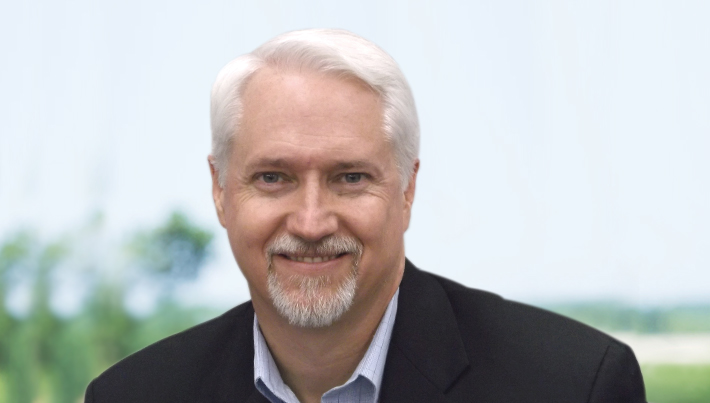
Can Steel Reduce Its Carbon Footprint?
- The steel industry is criticized as one of the biggest contributors to greenhouse gas emission
- Yet, steel has a vital role to play as an enabler to transition to a more sustainable future
- Steel has important uses in lighter, fuel-efficient vehicles, renewable energy generation and construction of smart electrical grids
April 07, 2021 | Metals & Minerals
Most steel is produced either from a blast furnace (BF)-basic oxygen furnace (BOF) or an electric arc furnace. It is estimated that an average of 1.9 metric tons of carbon dioxide (CO2) are emitted to produce every metric ton of steel.
According to the World Steel Association, coal accounts for approximately 90% of a BF-BOF’s energy input. The energy input from electricity accounts for 7% and the remaining comes from natural gas and other available sources.
The most carbon-intensive steel making process is the conventional way, iron ore-based steel produced in the blast furnace-basic oxygen furnace (BF-BOF). The BF-BOF route not only uses coking coal as the reducing agent but also as the source of energy, thus making it more carbon-intensive. Overall, the contribution of carbon emission through the BF-BOF route is about 2.3 tons for every ton of steel produced.
Reducing Carbon Emissions in the BF-BOF Process
⚬ Programs for BF-BOF efficiency:
There are two approaches to improve the efficiency of the BF-BOF process, which can help in reducing the emissions. The first is maximizing the iron content in raw materials to decrease the usage of coal as a reductant, hence, optimizing the BF burden mix. While this would decrease carbon emissions, it does not fully offer carbon-neutral steel production. The second approach involves increasing the use of pulverized coal injection, natural gas, plastic or the use of coke oven gas as the energy source.
⚬ BOF with carbon capture and storage (CCS) technology:
CCS technology can help reduce carbon emissions by 60% as it allows manufacturers to capture emissions in the steelmaking process. The technology can be retrofitted with the existing setup used for the BF-BOF production. The challenge here is the large initial infrastructure investment.
⚬ Substituting coking coal with biofuel:
Biofuel, even though carbon-based, does not contribute to greenhouse gases upon combustion hence the lower impact on the environment. The use of biofuels in BF-BOF can reduce the carbon emissions in half. While this is a mature technology, the challenge is the feasibility to implement it on a large-scale, which depends on availability.
Lowering Carbon Emissions by Optimizing Electric Arc Furnaces (EAFs)
⚬ Scrap-based EAFs:
Increasing the share of scrap based EAFs maximizes secondary flow and recycles by melting more scrap. High-quality scrap products are mainly needed to produce high-quality products that are produced mainly through an integrated route. However, if there isn’t high-quality scrap, lower-quality scrap can be mixed with direct reduced iron to ensure high-quality input.
⚬ Direct Reduced Iron (DRI):
In this process, metal is directly reduced from the ore in the solid-state without having the need to melt it. This uses natural gas as the reducing agent, which helps reduce carbon emissions by 50% as compared to the conventional BF-BOF route. DRI can be mixed with lower quality scrap to guarantee specific qualities. The challenge is the dependency on the availability of natural gas.
⚬ DRI and EAFs Using Hydrogen:
In the DRI production stage, fossil fuels are replaced with hydrogen produced with renewable energy. It is a technically-proven production method that is enabling nearly emission-free steel production. Several leading companies such as SSAB and ArcelorMittal are exploring this new concept.
The Future of Carbon-Neutral Steel
Even though there are challenges in implementing these alternative technologies for the production of carbon-neutral steel, producers with the help of governments and technology innovators are working on several initiatives. Most of the projects are concentrated in Europe due to support from the European Commission with an aim to make EU carbon neutral by 2050. For the rest of the world to follow suit, it is imperative for steel producers to assess, evaluate and decide on a technologically and economically viable means to decrease their carbon footprint.
Turn ideas into action. Talk to GEP.
GEP helps enterprise procurement and supply chain teams at hundreds of Fortune 500 and Global 2000 companies rapidly achieve more efficient, more effective operations, with greater reach, improved performance, and increased impact. To learn more about how we can help you, contact us today.

David Doran
Vice President, Consulting
David has over 20 years of experience in leading several large-scale consulting and sourcing engagements for transport and logistics at Fortune 500 companies.
A recognized leader in supply chain management and logistics, David plays a critical role in the design, sourcing and implementation of supply chain improvements to GEP’s global clients.



